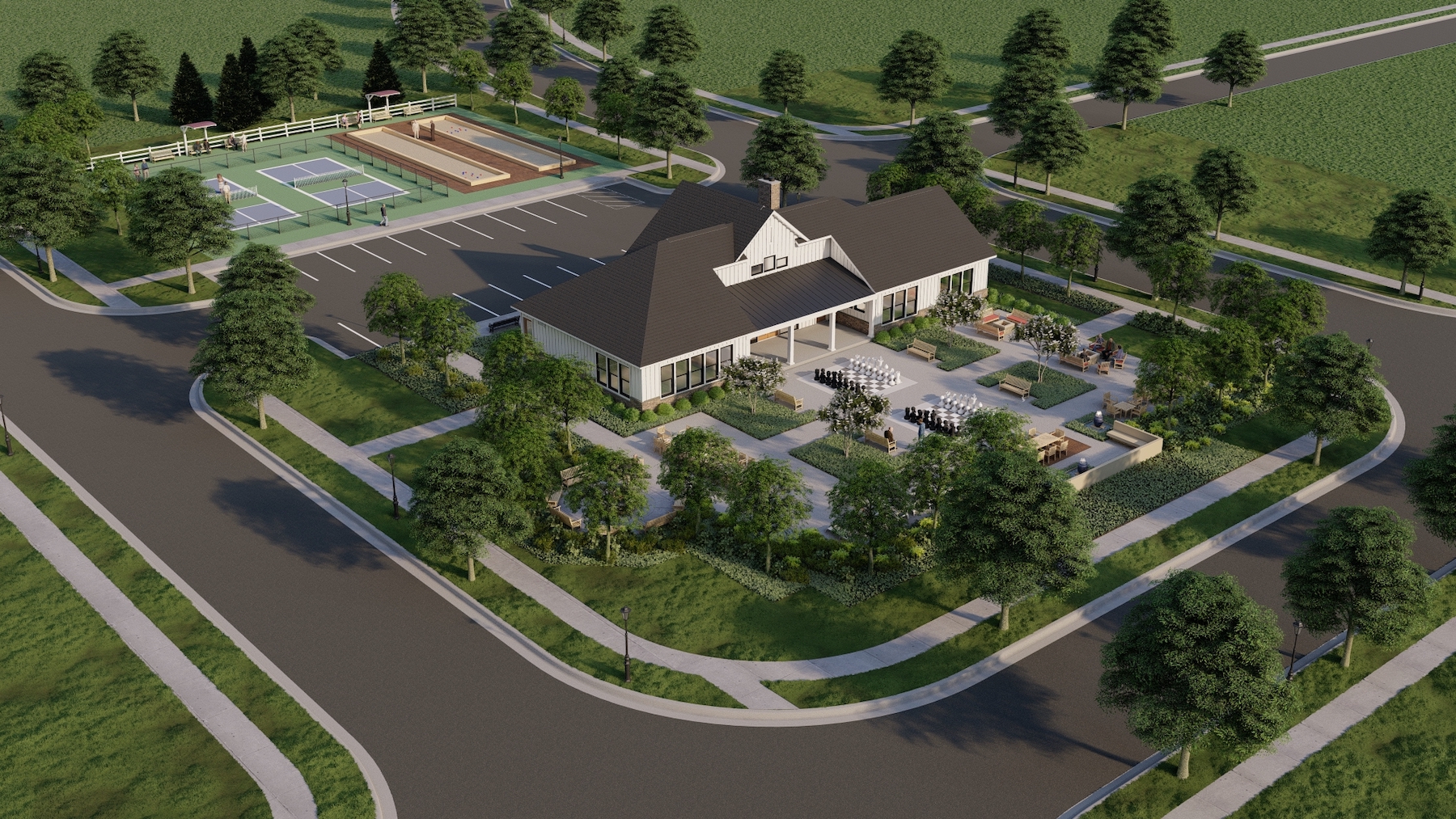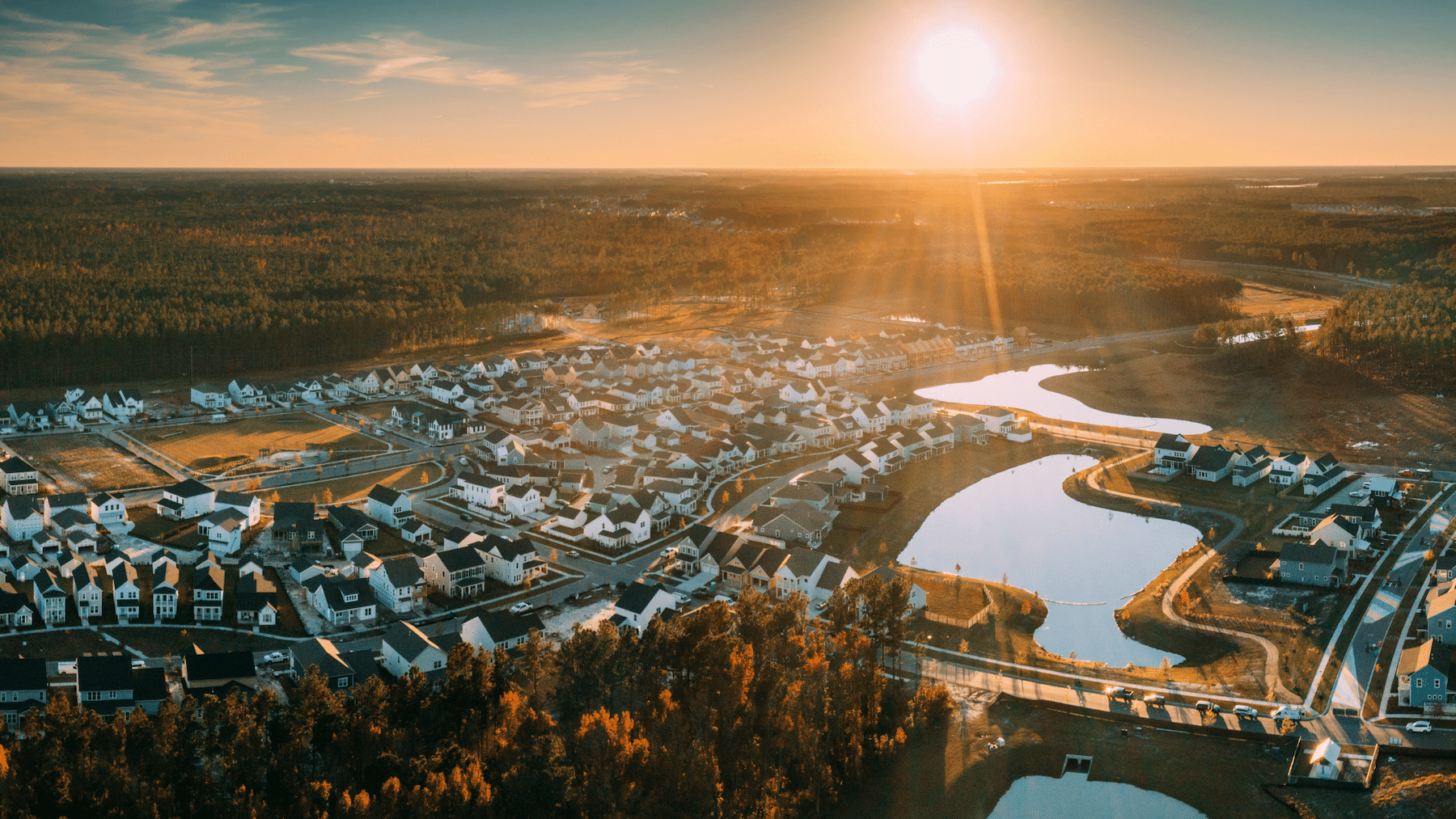Gone are the days of sleepy 55+ communities. Today's iteration is brilliantly designed and bustling with activity. In fact, even the nomenclature has changed: This crowd is "55 or better"—and they're looking for communities that reflect this shift. A recent study found that market size for the active adult community was estimated at $565 billion in 2021 and is expected to reach over $587 billion in 2022.
With so much growth on tap, builders and developers must stay apprised of trends related to home, environment and culture. In doing so, they can be responsive to buyers' wants and needs. The result? Vibrant places offering a lifestyle that stands out in the competitive active adult space.
WHAT MAKES A SUCCESSFUL ADULT COMMUNITY
Brookfield Properties, an award-winning North American developer of master-planned communities (MPCs), is no stranger to delivering developments that go above and beyond. Working with renowned homebuilders like Pulte/Del Webb, Miller & Smith, David Weekley Homes and Toll Brothers, Brookfield Properties knows a thing or two about what it takes to appeal to discerning 55-or-better buyers. Here are some of the top trends behind today’s successful active adult communities.
VIP amenities
With the kids out of the house, empty-nesters flock to active adult communities to start the next chapter of their lives. They prefer private members-only options, like pools, pickleball courts and gated entrances. Another feature high on their list is something many 55+ communities lack: grandchild-friendly options, like playgrounds, special events and play areas incorporated into resident lounges or fitness centers. In multiple Brookfield Properties master-planned communities, they get the best of both worlds, with dedicated active adult amenities plus access to shared neighborhood amenities. At Kissing Tree in San Marcos, Texas, residents enjoy low-maintenance living with included lawn care options and an 18-hole golf course steps from their front doors. Top-tier options create a resort-like feel and provide residents with a quiet space to call home.

Access to popular retail and commercial spaces is another big draw in mixed-use master-planned communities. For example, Nexton, a top-selling, award-winning MPC in Summerville, South Carolina, boasts more than 120 restaurants and shops within its bounds. With a diverse mix of local and regional businesses for residents and visitors to explore, well-designed mixed-use communities invite commerce and community-building.
The perfect proximity
Location is a key factor driving purchasing decisions for active adult buyers. As developers of MPCs, our experience indicates that 55+ buyers want to live near their children and grandchildren during this next phase of their lives—even if they’re only there part-time. Master-planned communities that include dedicated active-adult neighborhoods provide the right mix of proximity (to loved ones), personal space and private amenities. These communities also allow for lateral moves; that is, residents already living in an MPC with an active adult subsection can downsize to an apartment, condo or patio home without leaving the neighborhood where they've built a life.
Migration to suburban communities is another trend we've observed. Studies show that more seniors and retirees are moving away from crowded cities and into smaller towns. However, they still want easy access to the retail, restaurants and events that metro areas offer. Suburban communities allow residents to enjoy the perks of a city without having to face the hustle and bustle day to day. For example, 55+ buyers in the D.C. market can live an hour outside the city at Cascades at Embrey Mill in Stafford, Va.
Community and connection
One thing the 55-or-better crowd has in common is starting anew. Whether it's downsizing, retiring, experiencing an empty nest or taking a leap to a new city, these residents are typically facing a dramatic shift in their everyday lives. The choice to move to an active adult community comes with a built-in sense of belonging via a myriad of amenities; neighborhood events; and shared spaces, both indoor and outdoor—not to mention a natural kinship with other residents who are looking for the same things.

Active adult communities should be just that: active. From potlucks to happy hour and cooking classes, there's no shortage of avenues to meet new people. At Riverlights in Wilmington, N.C., neighbors come together for events like “craft & unwine” and free summer concerts, as well as enjoy local fare at The Groove Market.
Customizable features
The 55+ demographic tends to have a higher disposable income than younger buyers. This crowd is also more discerning, as they have the benefit of decades of life experience to guide them. From a developer standpoint, we’re noticing that builders are paying attention. We’re seeing more floor plans for single-level living, outdoor living spaces like screened-in porches, gourmet kitchens designed for ease and convenience, and an increasing array of customizable options.
Today's 55-or-better buyers are ready to design their lives and their homes as they see fit. When builders respond to the unique needs of a demographic, it creates a sea change. In this case, yesterday's sleepy active adult communities are now tuned in and turned up. We expect more great things to come.
About Brookfield Properties
Brookfield Properties is a leading global developer and operator of high-quality real estate assets. We are active in nearly all real estate sectors, including office, retail, multifamily, hospitality and logistics, operating more than 675 properties and more than 325 million square feet of real estate in gateway cities around the globe on behalf of Brookfield Asset Management, one of the largest asset managers in the world. With a focus on sustainability, a commitment to excellence, and the drive for relentless innovation in the planning, development and management of buildings and their surroundings, Brookfield Properties is reimagining real estate from the ground up. For more information, visit www.brookfieldproperties.com.
Related Stories
| Oct 15, 2014
Harvard launches ‘design-centric’ center for green buildings and cities
The impetus behind Harvard's Center for Green Buildings and Cities is what the design school’s dean, Mohsen Mostafavi, describes as a “rapidly urbanizing global economy,” in which cities are building new structures “on a massive scale.”
| Oct 12, 2014
AIA 2030 commitment: Five years on, are we any closer to net-zero?
This year marks the fifth anniversary of the American Institute of Architects’ effort to have architecture firms voluntarily pledge net-zero energy design for all their buildings by 2030.
| Sep 24, 2014
Architecture billings see continued strength, led by institutional sector
On the heels of recording its strongest pace of growth since 2007, there continues to be an increasing level of demand for design services signaled in the latest Architecture Billings Index.
| Sep 22, 2014
4 keys to effective post-occupancy evaluations
Perkins+Will's Janice Barnes covers the four steps that designers should take to create POEs that provide design direction and measure design effectiveness.
| Sep 22, 2014
Sound selections: 12 great choices for ceilings and acoustical walls
From metal mesh panels to concealed-suspension ceilings, here's our roundup of the latest acoustical ceiling and wall products.
| Sep 9, 2014
Using Facebook to transform workplace design
As part of our ongoing studies of how building design influences human behavior in today’s social media-driven world, HOK’s workplace strategists had an idea: Leverage the power of social media to collect data about how people feel about their workplaces and the type of spaces they need to succeed.
| Sep 7, 2014
Behind the scenes of integrated project delivery — successful tools and applications
The underlying variables and tools used to manage collaboration between teams is ultimately the driving for success with IPD, writes CBRE Healthcare's Megan Donham.
| Sep 3, 2014
New designation launched to streamline LEED review process
The LEED Proven Provider designation is designed to minimize the need for additional work during the project review process.
| Sep 2, 2014
Ranked: Top green building sector AEC firms [2014 Giants 300 Report]
AECOM, Gensler, and Turner top BD+C's rankings of the nation's largest green design and construction firms.
| Sep 2, 2014
Harvard study: Nation unprepared to meet housing needs of aging population
The number of adults in the U.S. aged 50 and over is expected to grow to 132 million by 2030. But housing that is affordable, physically accessible, well-located, and coordinated with supports and services is in too short supply.
















